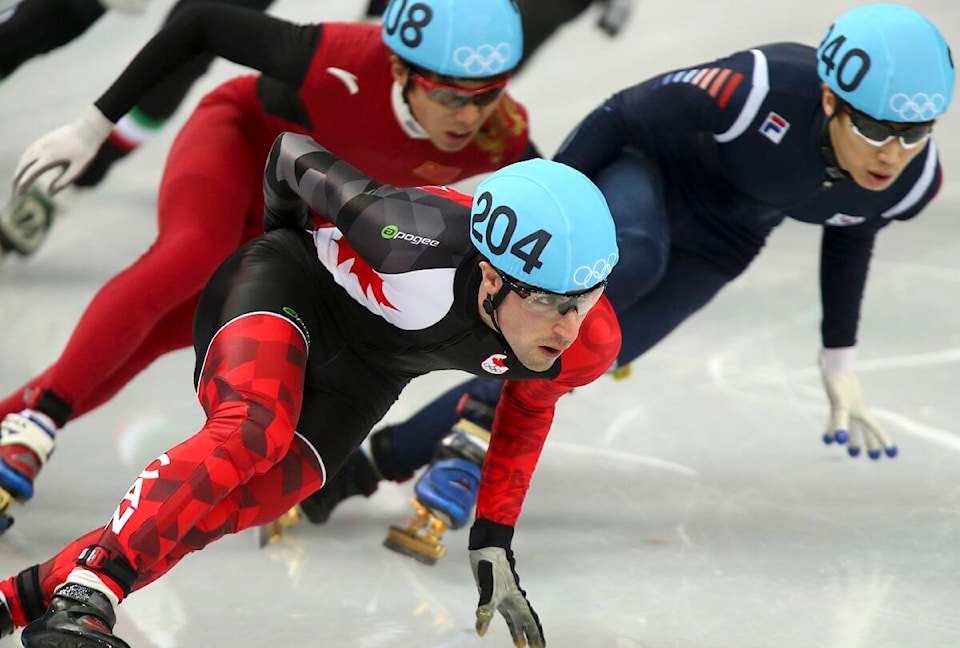For many athletes who compete at the Arctic Winter Games, it will be the biggest event they will ever do. And that’s OK for a lot of them.
Some athletes, though, have gone on to do bigger and better things. Athletes such as Brendan Green, who became part of the Canadian men’s biathlon team for several years with three appearances at the Winter Olympics to his credit (2010, 2014 and 2018). Curler Kevin Koe is another with four Canadian men’s curling championships under his belt, two world titles and a Winter Olympic appearance in 2018.
There’s Carlos Boozer, who played basketball with Alaska and who went on to a 13-year career in the NBA.
And there’s Michael Gilday, who only went on to become perhaps the most successful Northern-born speedskater ever. Gilday competed at four Arctic Winter Games between 1998 and 2004 before cracking the national team a few years later. He competed in several World Cup and World Short Track Championships over the course of his career with the culmination coming as a member of the 2014 Winter Olympics Canadian squad in Sochi, Russia.
Gilday, who was 11 years old when he first hit the ice for the NWT at the 1998 Arctic Winter Games in Yellowknife, said the Olympics weren’t really on his radar when he started getting serious about the sport.
“I was aware of the Olympics, but it definitely wasn’t part of my plan back then,” he said. “It was probably around 2002, my third AWG, when I really began looking at them more seriously.”
Being one of the younger members of the team in 1998 meant Gilday had older skaters to look up to and learn from.
They imparted quite a bit of wisdom on him, he said, and it all started with the uniform itself.
“The older teammates were telling me that it was a big deal to get the uniform and you don’t wear any part of it until the Games began,” he said. “I can remember stepping out in the uniform for the first time and I can remember the nerves and the weight of wearing the colours. The NWT has such a really big reputation for having a strong short-track squad and it was instilled in me at a young age. It’s all about having fun, but there’s also the expectation that we do well.”
Comparing the Arctic Winter Games and Winter Olympics might seem unrealistic, but Gilday said there are some similarities.
The size of both events is one.
“If you look at the amount of athletes, the difference isn’t terribly dissimilar,” he said. “At the Arctic Winter Games, you’re living in a dorm-type of setting, eating at a cafeteria and hanging out with a lot of people. At the Olympics, you’re eating at a cafeteria, living in a dorm-type setting and hanging out with a lot of people. You can’t compare the two because they’re so different, but it’s interesting to look at it from that perspective.”
Gilday retired shortly after the 2014 Olympics and since then, he’s tried to help give back wherever he can in terms of coaching and mentoring.
If athletes were to come up and ask him for advice, Gilday said one of the things he would tell them is to enjoy the experience.
“I had a blast every time I competed,” he said. “I got to meet so many people and I still have friends I talk to from all those years ago. It’s also a great way to test yourself. It brings together so many people in the circumpolar North and you don’t always get to compete against people from places such as Yukon or Alaska. If you’re a cross-country skier, you wouldn’t get the chance to race against skiers from Sapmi or Greenland unless you’re at the AWG.
“Just don’t let it overwhelm you. It’s an opportunity to see what you can do and grow in your chosen sport, but everyone’s there to do their best.”
